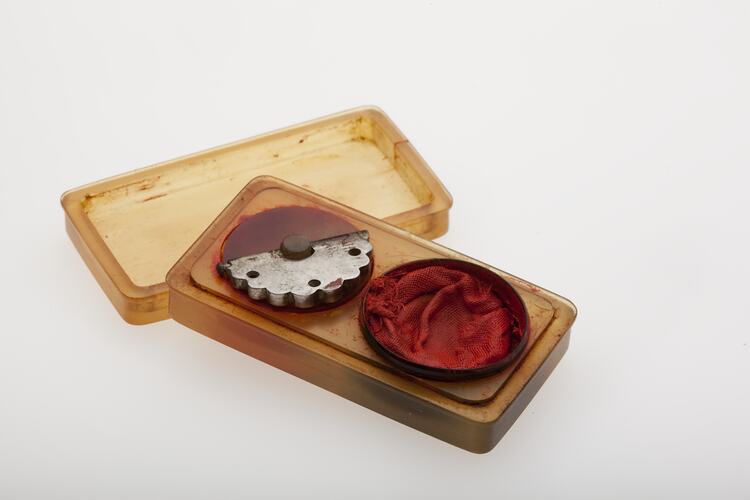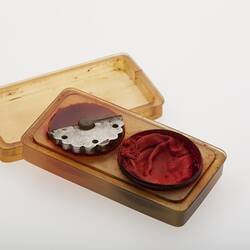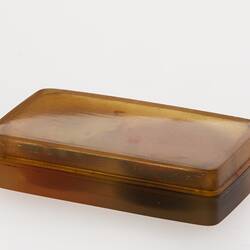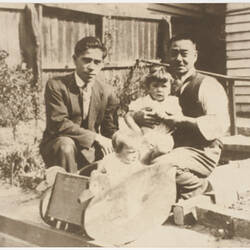Summary
Alternative Name: 'hanko' or 'inkan' (Japanese)
Traditional name seal and wax belonging to Setsutaro Hasegawa. It was brought out from Japan by Setsutaro Hasegawa who migrated to Australia in 1897. Hanko were initially only used by the Emperor, and from 750AD they were also used by the Japanese nobility. From 1870 onwards hanko came to be used throughout Japanese society.
Setsutaro migrated to Australia from Japan in 1897 at the age of 26, just four years before the introduction of the Immigration Restriction Act which severely limited migration to Australia from countries in Asia. He established a laundry business in Geelong and by 1911 he had married an Australian-born woman and had three children.
In 1941 Setsutaro was arrested as an enemy alien and sent to Tatura internment camp in northern Victoria. Released early in 1943 due to his age and poor health, unlike most Japanese interns he was not deported to Japan after the War. Setsutaro remained in Geelong for the rest of his life and died in 1952.
Physical Description
Small case in early plastic containing a round red seal with Japanese name characters with a metal hinge for removing from case and holding to stamp. Next to seal is a round inset container for red wax.
Significance
The Hasegawa collection enables the exploration of a number of important historical themes relating to migration, working life, and wartime internment in Victoria. Late nineteenth century and early to mid twentieth century Japanese migration and settlement experiences are little represented in the museum's collections and this collection of clothing, documents, personal items and photographs helps to redress.
More Information
-
Collecting Areas
-
Acquisition Information
Donation from Andrew Hasegawa, Andrew Hasegawa, 08 Feb 2008
-
Place & Date Made
-
User
Mr Setsutaro Hasegawa, Geelong, Victoria, Australia, 1987-1950s
-
User
Mr Setsutaro Hasegawa, Tatura, Victoria, Australia, 1942-1945
-
Classification
-
Category
-
Discipline
-
Type of item
-
Object Measurements
37 mm (Width), 21 mm (Depth), 10 mm (Height)
-
References
5 family photographs (need originals from donor to scan)
-
Keywords
Immigration, Immigration Policies, Internment Camps, Japanese Communities, Japanese Culture, Japanese Immigration, World War II, 1939-1945



